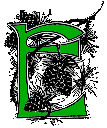 dmund Burke, whose Philosophical Enquiry into the Origin of our Ideas of the Sublime and Beautiful was published in 1757, believed, however, that "terror is in all cases whatsoever . . . the ruling principle of the sublime" and, in keeping with his conception of a violently emotional sublime, his idea of astonishment, the effect which almost all theorists mentioned, was more violent than that of his predecessors: "The passion caused by the great and sublime in nature . . . is Astonishment; and astonishment is that state of the soul, in which all its motions are suspended, with some degree of horror. In this case the mind is so entirely filled with its object, that it cannot entertain any other." [Burke, On the Sublime, ed. J. T. Bolton. 58]
dmund Burke, whose Philosophical Enquiry into the Origin of our Ideas of the Sublime and Beautiful was published in 1757, believed, however, that "terror is in all cases whatsoever . . . the ruling principle of the sublime" and, in keeping with his conception of a violently emotional sublime, his idea of astonishment, the effect which almost all theorists mentioned, was more violent than that of his predecessors: "The passion caused by the great and sublime in nature . . . is Astonishment; and astonishment is that state of the soul, in which all its motions are suspended, with some degree of horror. In this case the mind is so entirely filled with its object, that it cannot entertain any other." [Burke, On the Sublime, ed. J. T. Bolton. 58]
In addition to the emphasis which he places on terror, Burke is important because he explained the opposition of beauty and sublimity by a physiological theory. He made the opposition of pleasure and pain the source of the two aesthetic categories, deriving beauty from pleasure and sublimity from pain. According to Burke, the pleasure of beauty has a relaxing effect on the fibers of the body, whereas sublimity, in contrast, tightens these fibers. Thus, by using the authority of his ingenious theory, he could oppose the beautiful and sublime: "The ideas of the sublime and the beautiful stand on foundations so different, that it is hard, I had almost said impossible, to think of reconciling them in the same subject, without considerably lessening the effect of the one or the other upon the passions'' [113-114]. Burke's use of this physiological theory of beauty and sublimity makes him the first English writer to offer a purely aesthetic explanation of these effects; that is, Burke was the first to explain beauty and sublimity purely in terms of the process of perception and its effect upon the perceiver. Turner was probably the first to embody these views in painting.
[Based upon Landow, The Aesthetic and Crirtical Theories of John Ruskin (Princeton UP, 1971).]
Last modified 1988